Order Odonata, Suborder Anisoptera (Dragonflies)
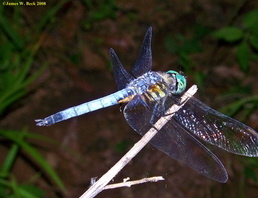

|
Blue Dasher - Pachydiplax Longipennis
This is one of the more numerous species seen in Spring and Summer around south Louisiana. Males' abdomens are blue, while females' are
brown and yellowish-orange. |
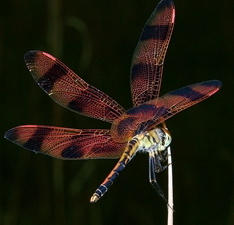
|
Halloween Pennant - Celithemis Eponina
Uncommon in the park, this species gets its name from the orange and black pattern on the wings. |

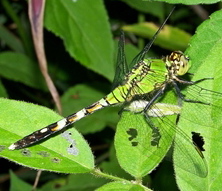
|
Eastern Pondhawk - Erythemis Simplicicollis
This is a well-known dragonfly to many. Males are light blue overall, and females have a green thorax with a black abdomen. |
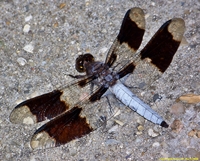

|
Common whitetail - Plathemis Lydia
Males of this species are known for their powder-blue abdomen and black in the wings. Females lack the blue abdomen, but share the wing
pattern. |
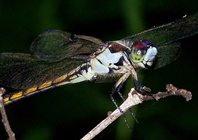
|
Great Blue Skimmer - Libellula Vibrans
One of the larger species locally; males are a light blue, with black tips to the wings. Females are pale gray on the thorax, with yellow
and black abdomens. |
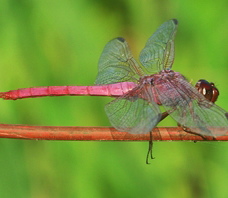
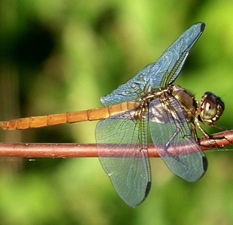
|
Roseate Skimmer - Orthemis Ferruginea
Males of this species are the only pink North American dragonfly. Females resemble the males, but are brown instead of pink. This species
is almost always found near water. |
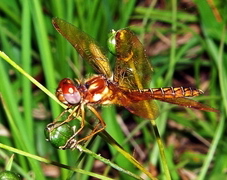
|
Eastern Amberwing - Perithemis Tenera
This is the smallest species of dragonfly that can be found in the park. They are only about the size of a wasp. Both sexes have amber-colored
wings, females having dark markings on the wings as well. |
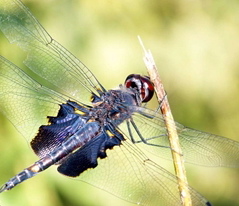
|
Black Saddlebags - Tramea Lacerata
This species (and all saddlebags) get their name from the dark markings on the hindwings. Males of this species have a bluish-black
thorax and abdomen, with yellow spots on some of the abdominal segments. Females have smaller "saddlebags" on the hindwings. |
Order Hymenoptera (Bees, Wasps and Ants)
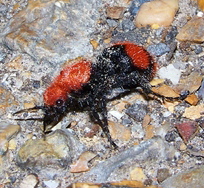
|
Cow Killer Velvet Ant - Dasymutilla Occidentalis
Females of this family are wingless, so they resemble large ants. Males fly, and like other wasp species, do not sting. |
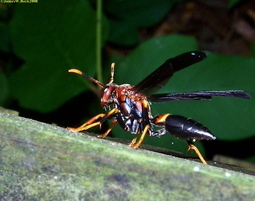
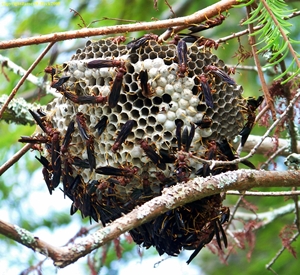
|
Paper Wasp - Polistes Metricus
This is probably the most well-known and easily recognized of our wasp species. One of their nicknames "red wasp", is descriptive of
its red head and thorax. They get the name paper wasp from their nests, which are papery in texture. |
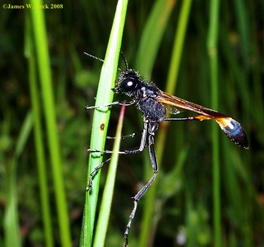
|
Thread-Waisted Wasp - Ammophila sp.
These wasps feed on nectar and pollen as adults, inhabiting fields with tall grasses and flowers. The adult females sting caterpillars and sawflies,
bring the immobilized victim down into their underground burrow, where an egg is laid ontop of it. The egg hatches, and the larva feeds on the
paralyed insect. |
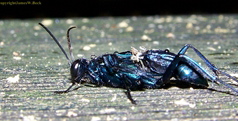
|
Blue Mud Wasp - Chalybion Californicum
Females of this species construct mud nests in sheltered areas, where spiders are stung and paralyzed. Eggs are laid on the spiders and the larvae
feed on them when they hatch. |
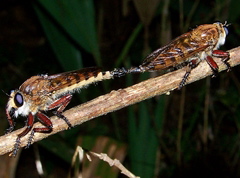
|
Robber Flies - Promachus Hinei
Robber flies have been compared to falcons, as they sit poised from a perch, and then fly out to capture prey items in mid-air! |
To see more photos, view our Facebook page.